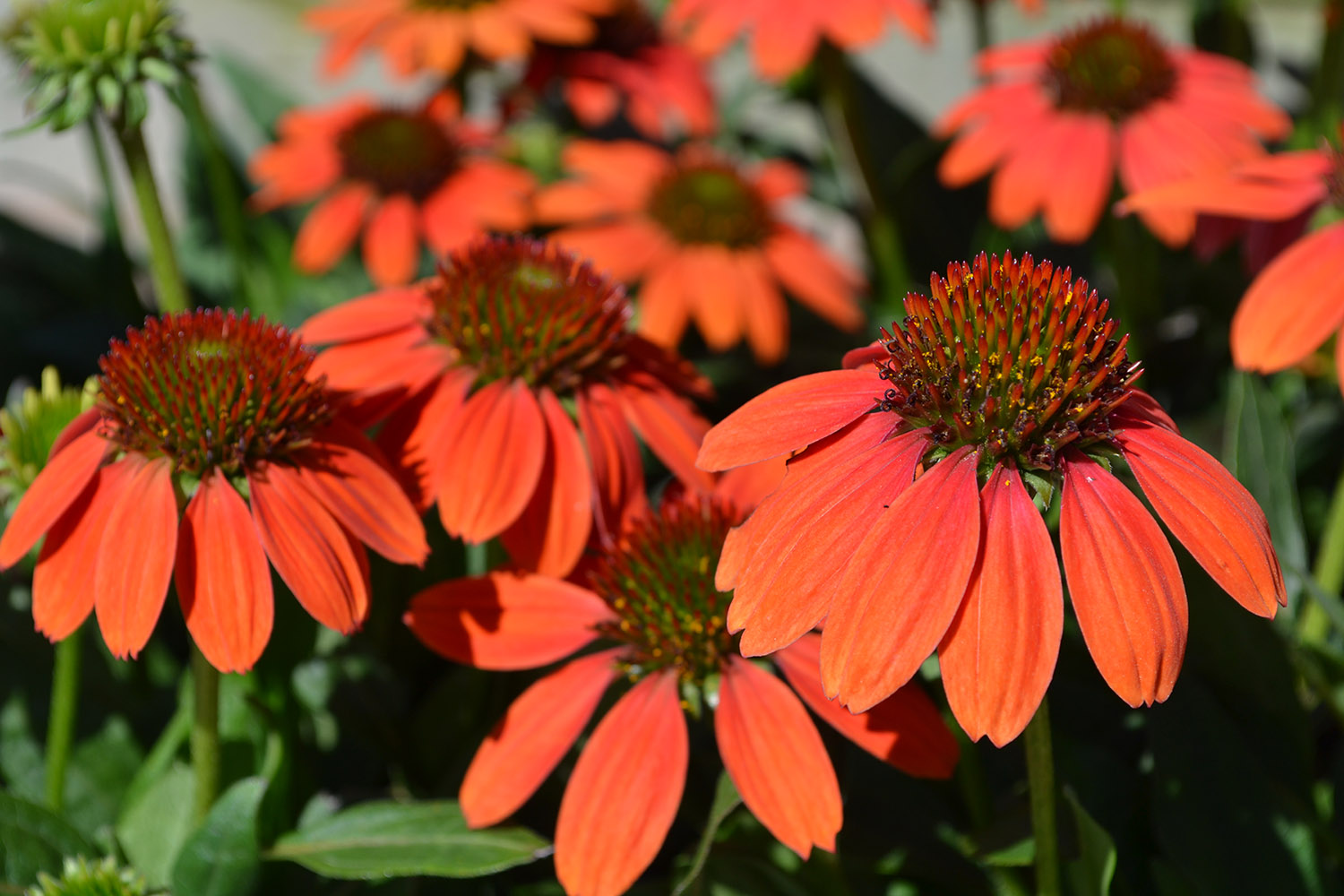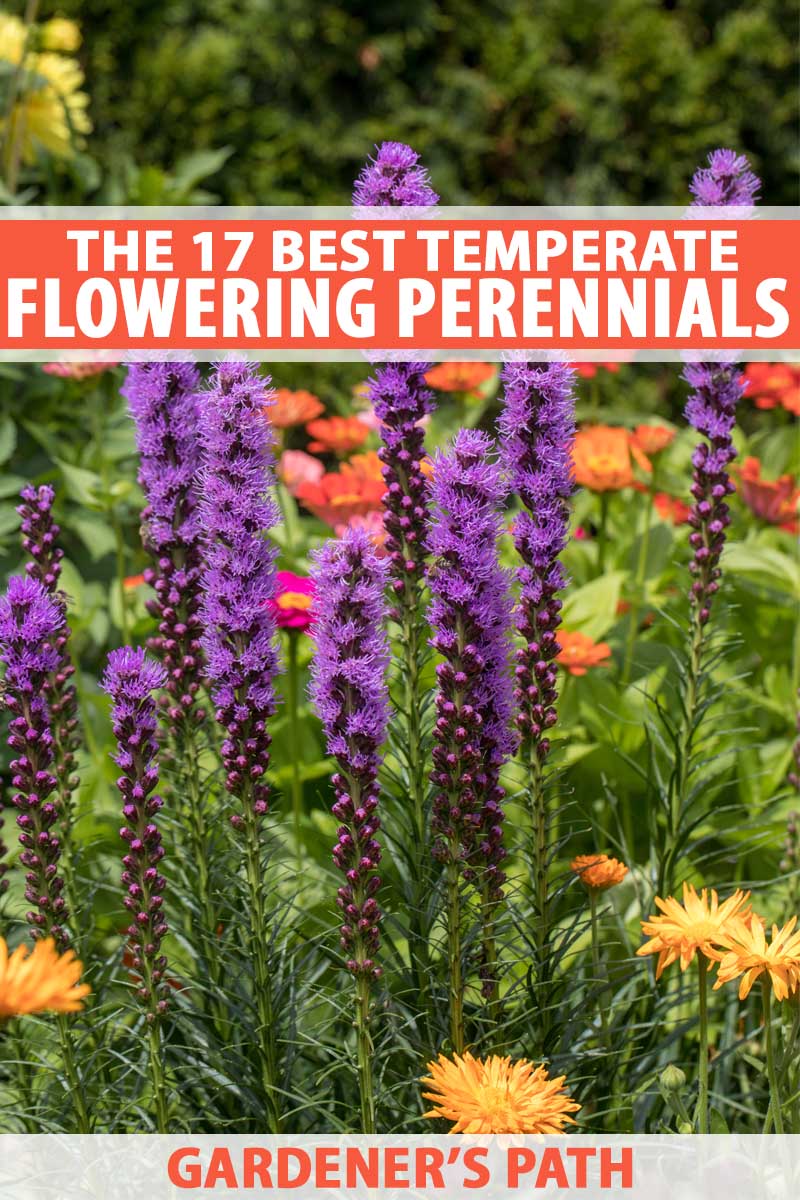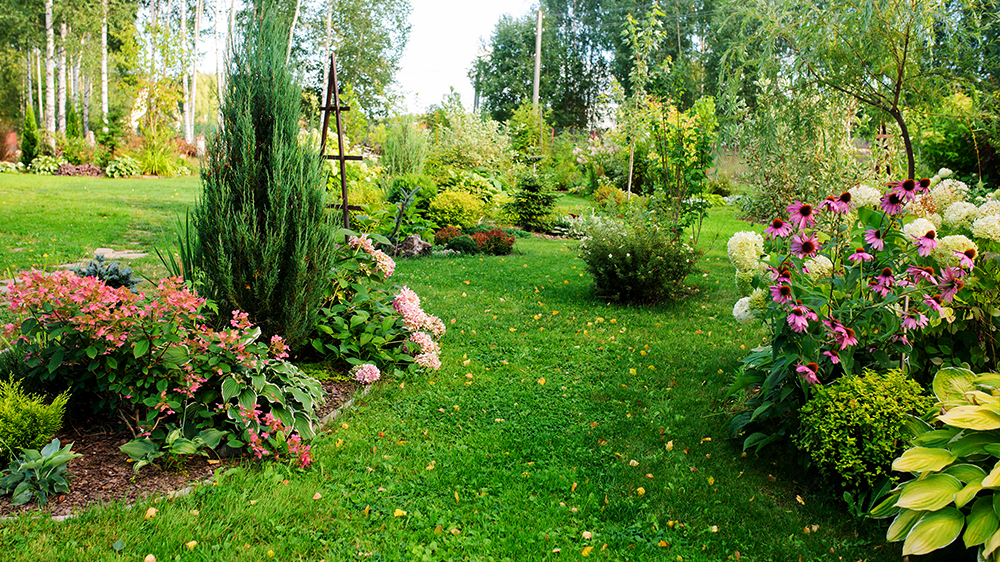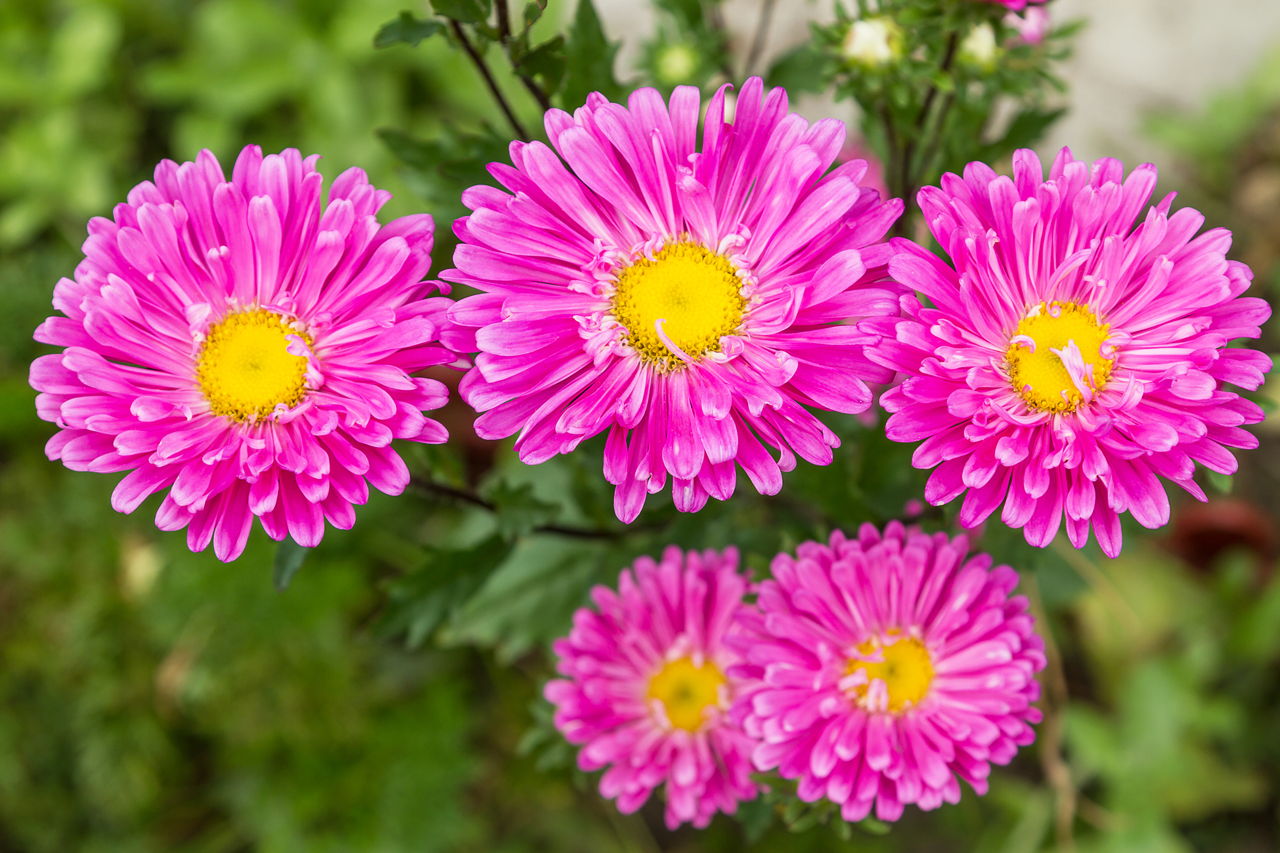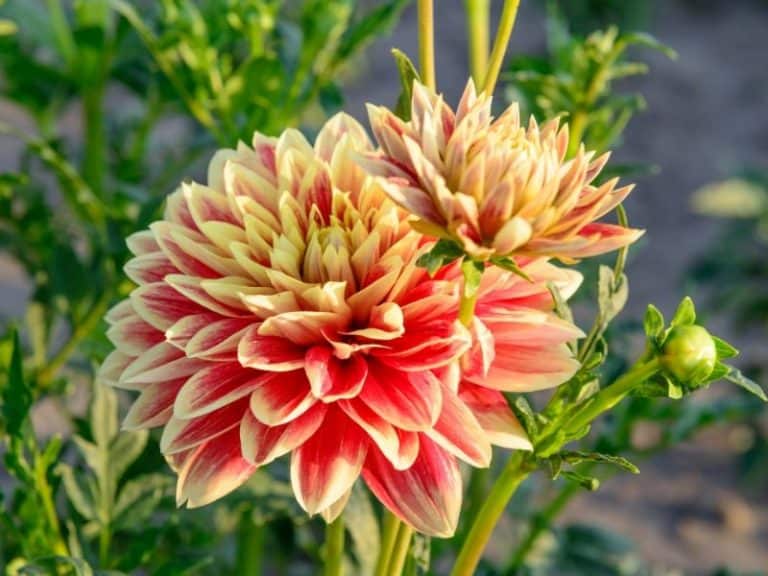What Makes a Perennial a Great Choice for Summer Blooms
Perennials are a popular choice for gardeners due to their low maintenance requirements and ability to attract pollinators. These plants have the potential to bloom for multiple seasons, adding color and vibrancy to gardens throughout the year. A perennial that blooms all summer can be a valuable addition to any garden, providing a constant source of color and interest.
One of the main benefits of perennials is their ability to come back year after year, making them a cost-effective option for gardeners. They also require less maintenance than annuals, as they don’t need to be replanted every year. This makes them an ideal choice for busy gardeners who want to enjoy a beautiful garden without spending too much time on upkeep.
In addition to their low maintenance requirements, perennials are also attractive to pollinators such as bees and butterflies. This makes them an excellent choice for gardeners who want to create a wildlife-friendly garden. By incorporating perennials into your garden, you can provide a source of food and shelter for these important insects.
When choosing a perennial that blooms all summer, consider the specific growing conditions of your garden. Different perennials have different requirements, so make sure to choose plants that are suitable for your climate and soil type. With the right care and attention, a perennial that blooms all summer can provide a stunning display of flowers and add beauty to your garden.
Top Perennials that Bloom All Summer Long
When it comes to selecting perennials that bloom all summer, there are numerous options to choose from. These plants are perfect for adding a pop of color and vibrancy to gardens throughout the warmest months. Here are some top-performing perennials that are sure to impress:
Black-Eyed Susans (Rudbeckia hirta) are a classic choice for summer-blooming perennials. These daisy-like flowers are easy to care for and produce bright yellow petals with dark centers from mid-summer to fall. They grow up to 3 feet tall and 2 feet wide, making them an excellent choice for borders and meadows.
Bee Balm (Monarda didyma) is another perennial that blooms all summer, attracting pollinators and hummingbirds to the garden. This fragrant herb produces red, pink, or purple flowers in mid-summer and grows up to 3 feet tall and 2 feet wide. Bee Balm prefers moist soil and partial shade, making it an ideal choice for woodland gardens.
Blazing Star (Liatris spp.) is a purple-flowering perennial that blooms in mid-to-late summer. This plant grows up to 3 feet tall and 1 foot wide, producing spiky flowers that attract butterflies and hummingbirds. Blazing Star prefers well-drained soil and full sun, making it an excellent choice for prairies and meadows.
Other notable perennials that bloom all summer include:
- Coneflower (Echinacea spp.): Produces large, showy flowers in shades of pink, purple, and white from mid-summer to fall.
- Salvia (Salvia spp.): Produces tall spikes of blue or purple flowers in mid-summer, attracting pollinators and hummingbirds.
- Daylily (Hemerocallis spp.): Produces showy, trumpet-shaped flowers in a range of colors from mid-summer to fall.
These perennials are just a few examples of the many plants that can add color and vibrancy to gardens throughout the summer. By incorporating a mix of these plants into your garden design, you can create a stunning display of blooms that will attract pollinators and wildlife all season long.
How to Create a Summer-Blooming Perennial Garden
Creating a summer-blooming perennial garden requires careful planning and consideration of several factors, including soil, sunlight, and watering. By following these tips and advice, you can design and plant a perennial garden that blooms throughout the summer and adds color and vibrancy to your outdoor space.
**Choose a Mix of Plants with Different Blooming Periods**
To create a summer-blooming perennial garden that blooms all season, choose a mix of plants with different blooming periods. This will ensure that there is always something in bloom, from early summer to late fall. Consider combining plants that bloom in early summer, such as Black-Eyed Susans and Bee Balm, with plants that bloom in mid-to-late summer, such as Blazing Star and Coneflower.
**Consider Soil and Sunlight Requirements**
Perennials have different soil and sunlight requirements, so it’s essential to choose plants that are suitable for your garden’s conditions. For example, if your garden receives full sun, choose plants that thrive in sunny conditions, such as Black-Eyed Susans and Blazing Star. If your garden receives partial shade, choose plants that prefer shadier conditions, such as Bee Balm and Coral Bells.
**Watering and Maintenance**
Perennials require regular watering, especially during hot summer months. However, overwatering can be detrimental to perennials, so it’s essential to water them deeply but infrequently. Additionally, consider adding a layer of mulch to retain moisture and suppress weeds.
**Design Considerations**
When designing a summer-blooming perennial garden, consider the mature size of each plant and leave enough space for proper growth. Also, consider the texture and color of each plant and combine them in a way that creates visual interest. For example, combine plants with different foliage textures, such as the delicate foliage of Coral Bells and the coarse foliage of Black-Eyed Susans.
**Tips for Planting**
When planting perennials, make sure to plant them at the same depth as they were in the pot and water them well after planting. Also, consider adding a starter fertilizer to promote healthy growth. Finally, mulch around the plants to retain moisture and suppress weeds.
By following these tips and advice, you can create a summer-blooming perennial garden that adds color and vibrancy to your outdoor space all season long. Remember to choose a mix of plants with different blooming periods, consider soil and sunlight requirements, and provide regular watering and maintenance.
Low-Maintenance Perennials for Busy Gardeners
For busy gardeners, finding perennials that are low-maintenance and easy to care for can be a challenge. However, there are many perennials that are perfect for busy gardeners, requiring minimal care and attention while still providing beautiful blooms all summer long.
Coneflowers (Echinacea spp.) are a great example of low-maintenance perennials that are perfect for busy gardeners. These drought-tolerant plants require minimal watering and care, and produce large, showy flowers in shades of pink, purple, and white from mid-summer to fall.
Daylilies (Hemerocallis spp.) are another low-maintenance perennial that are perfect for busy gardeners. These hardy plants require minimal care and attention, and produce beautiful, trumpet-shaped flowers in a range of colors from mid-summer to fall.
Coral Bells (Heuchera spp.) are a low-maintenance perennial that are perfect for adding a pop of color to the garden. These plants require minimal care and attention, and produce beautiful, maple-like leaves in shades of pink, purple, and silver.
Other low-maintenance perennials that are perfect for busy gardeners include:
- Black-Eyed Susans (Rudbeckia hirta): Produce bright yellow flowers with dark centers from mid-summer to fall.
- Bee Balm (Monarda didyma): Produce red, pink, or purple flowers in mid-summer, attracting pollinators and hummingbirds.
- Blazing Star (Liatris spp.): Produce purple flowers in mid-to-late summer, attracting butterflies and hummingbirds.
These low-maintenance perennials are perfect for busy gardeners who want to add color and vibrancy to their garden without spending a lot of time and effort. By incorporating these plants into your garden design, you can enjoy a beautiful and thriving garden all summer long.
When growing low-maintenance perennials, it’s essential to remember that they still require some care and attention. Make sure to water them regularly, fertilize them annually, and deadhead them regularly to encourage more blooms.
By following these tips and incorporating low-maintenance perennials into your garden design, you can enjoy a beautiful and thriving garden all summer long, even with a busy schedule.
Perennials that Attract Pollinators and Wildlife
Attracting pollinators and wildlife to the garden is an essential aspect of creating a thriving and diverse ecosystem. Perennials that bloom all summer are particularly attractive to these visitors, providing a constant source of nectar, pollen, and shelter. In this section, we will highlight some of the best perennials for attracting pollinators and wildlife to the garden.
Butterfly Bush (Buddleja davidii) is a perennial that blooms all summer and is a magnet for butterflies and hummingbirds. This shrub-like perennial produces long, conical flowers in shades of pink, purple, and white that are rich in nectar and pollen.
Lavender (Lavandula spp.) is another perennial that blooms all summer and is attractive to pollinators and wildlife. This low-growing perennial produces purple flowers that are rich in nectar and pollen, and its fragrance is particularly attractive to bees and butterflies.
Catmint (Nepeta spp.) is a perennial that blooms all summer and is attractive to pollinators and wildlife. This low-growing perennial produces blue, purple, or white flowers that are rich in nectar and pollen, and its fragrance is particularly attractive to bees and butterflies.
Other perennials that are attractive to pollinators and wildlife include:
- Bee Balm (Monarda didyma): Produces red, pink, or purple flowers in mid-summer that are rich in nectar and pollen.
- Blazing Star (Liatris spp.): Produces purple flowers in mid-to-late summer that are rich in nectar and pollen.
- Coneflower (Echinacea spp.): Produces large, showy flowers in shades of pink, purple, and white from mid-summer to fall that are rich in nectar and pollen.
When choosing perennials that attract pollinators and wildlife, consider the following tips:
Choose a variety of perennials that bloom at different times to provide a constant source of nectar and pollen.
Plant perennials in a location that receives full sun to partial shade, depending on the specific needs of the plant.
Use a mix of perennials that are native to your region, as these will be more attractive to local pollinators and wildlife.
Avoid using pesticides, as these can harm or kill pollinators and wildlife.
By incorporating these perennials into your garden design, you can create a thriving and diverse ecosystem that attracts pollinators and wildlife all summer long.
How to Deadhead and Prune Perennials for More Blooms
Deadheading and pruning are essential techniques for encouraging more blooms and maintaining the shape of perennials. By removing spent flowers and trimming back overgrown stems, you can promote healthy growth and encourage your perennials to produce more blooms throughout the summer.
**Deadheading**
Deadheading involves removing spent flowers from your perennials to encourage more blooms. This technique is particularly effective for perennials that produce showy flowers, such as coneflowers and black-eyed Susans. To deadhead, simply snip off the spent flower stem at the base of the plant, making sure to leave any new buds or growth intact.
**Pruning**
Pruning involves trimming back overgrown stems to maintain the shape of your perennials and encourage healthy growth. This technique is particularly effective for perennials that tend to become leggy or overgrown, such as bee balm and coral bells. To prune, simply trim back the stems to the desired height, making sure to leave any new growth or buds intact.
**Best Tools to Use**
When deadheading and pruning perennials, it’s essential to use the right tools to avoid damaging the plants. A pair of sharp, clean pruning shears or loppers is ideal for most perennials. For more delicate perennials, such as coral bells and catmint, a pair of scissors or pinchers may be more effective.
**Optimal Time to Prune**
The optimal time to prune perennials depends on the specific type of plant. For most perennials, pruning in the spring or early summer is best, as this allows the plant to put its energy into producing new growth and blooms. However, some perennials, such as coneflowers and black-eyed Susans, may benefit from pruning in the fall, as this allows the plant to prepare for the next growing season.
**Tips for Pruning Different Types of Perennials**
Here are some tips for pruning different types of perennials:
- Coneflowers: Prune in the fall to prepare for the next growing season.
- Bee Balm: Prune in the spring to maintain shape and encourage new growth.
- Coral Bells: Prune in the spring to maintain shape and encourage new growth.
- Black-Eyed Susans: Prune in the fall to prepare for the next growing season.
By following these tips and techniques, you can encourage more blooms and maintain the shape of your perennials throughout the summer.
Common Mistakes to Avoid When Growing Summer-Blooming Perennials
While growing summer-blooming perennials can be a rewarding experience, there are several common mistakes to avoid in order to ensure the health and success of your plants. By being aware of these potential pitfalls, you can take steps to prevent them and enjoy a thriving and vibrant garden all summer long.
**Overwatering**
One of the most common mistakes to avoid when growing summer-blooming perennials is overwatering. While perennials need adequate moisture to thrive, too much water can be detrimental to their health. Overwatering can lead to root rot, fungal diseases, and other problems that can weaken or kill your plants.
**Underwatering**
On the other hand, underwatering can also be a problem for summer-blooming perennials. While perennials are generally drought-tolerant, they still need adequate moisture to produce blooms and thrive. Underwatering can lead to weak and spindly growth, reduced blooming, and increased susceptibility to pests and diseases.
**Failing to Provide Adequate Sunlight**
Most summer-blooming perennials require full sun to partial shade to produce blooms and thrive. Failing to provide adequate sunlight can lead to weak and spindly growth, reduced blooming, and increased susceptibility to pests and diseases.
**Not Deadheading or Pruning**
Deadheading and pruning are essential techniques for encouraging more blooms and maintaining the shape of summer-blooming perennials. Failing to deadhead or prune your perennials can lead to a decrease in blooming and a loss of shape and form.
**Not Mulching**
Mulching is an important technique for retaining moisture, suppressing weeds, and regulating soil temperature. Failing to mulch your summer-blooming perennials can lead to increased water loss, weed growth, and soil temperature fluctuations.
**Not Fertilizing**
Fertilizing is an important technique for providing summer-blooming perennials with the nutrients they need to thrive. Failing to fertilize your perennials can lead to weak and spindly growth, reduced blooming, and increased susceptibility to pests and diseases.
By avoiding these common mistakes, you can help ensure the health and success of your summer-blooming perennials and enjoy a thriving and vibrant garden all summer long.
Conclusion: Enjoying a Summer of Color with Perennials
Summer-blooming perennials are a great way to add color and vibrancy to your garden throughout the warmest months. By choosing a mix of perennials that bloom at different times, you can create a garden that is constantly in bloom and provides a haven for pollinators and wildlife.
Remember to consider the specific needs of each perennial, including sunlight, watering, and soil requirements. With proper care and attention, your summer-blooming perennials will thrive and provide a beautiful display of color all summer long.
One final tip for enjoying a summer of color with perennials is to consider adding a few annuals to your garden. Annuals such as marigolds, zinnias, and sunflowers can add a pop of color and interest to your garden, and can be easily incorporated into your perennial garden design.
By following the tips and advice outlined in this article, you can create a beautiful and thriving summer-blooming perennial garden that will provide a haven for pollinators and wildlife, and a source of enjoyment for you and your family all summer long.
So why not get started today? Choose a few of your favorite summer-blooming perennials, and start planning your garden design. With a little creativity and effort, you can create a garden that is truly unforgettable.



